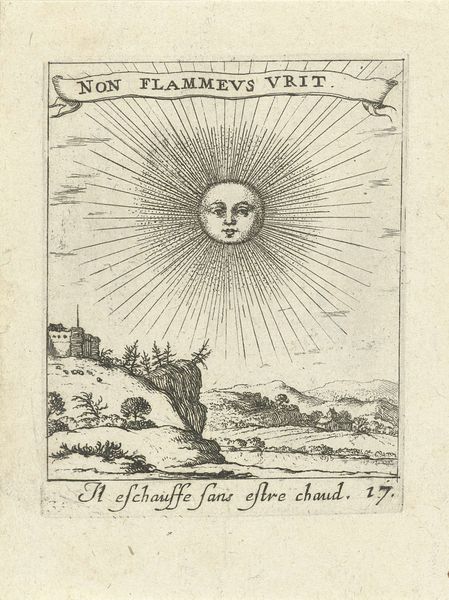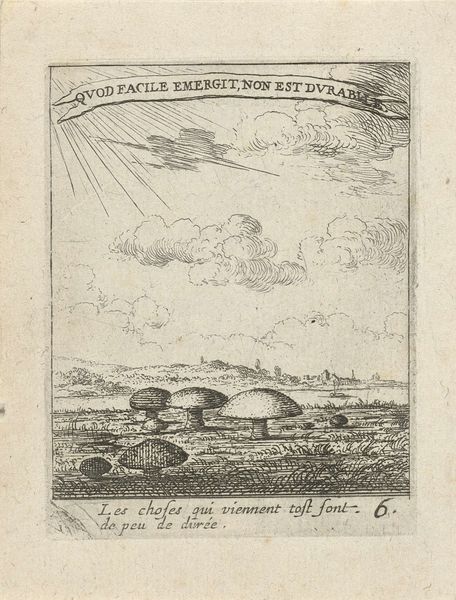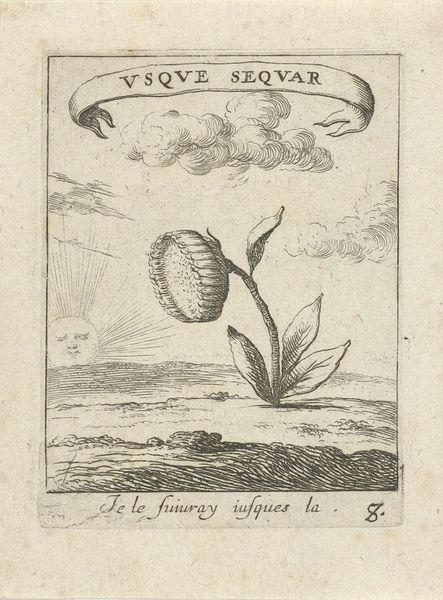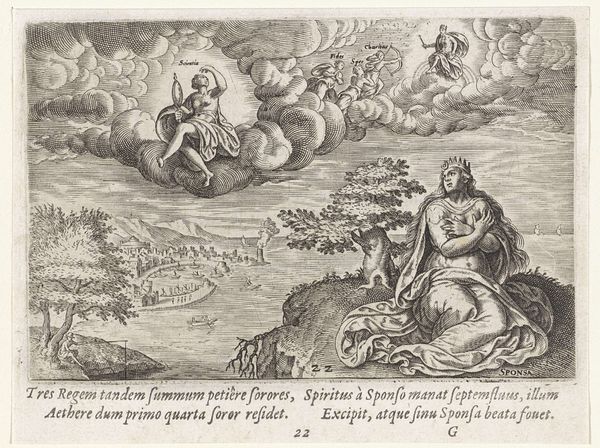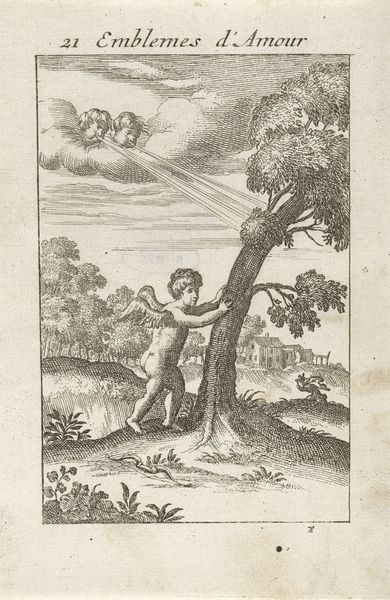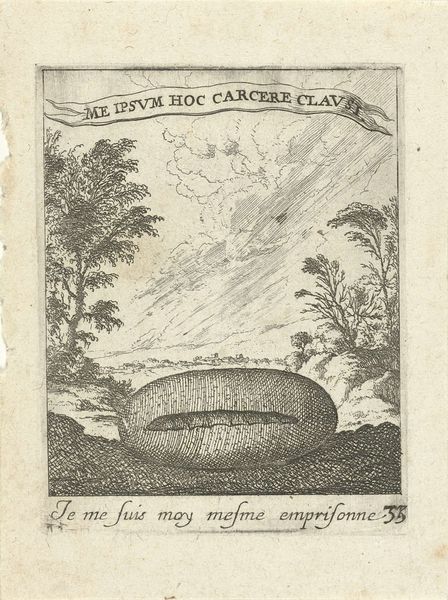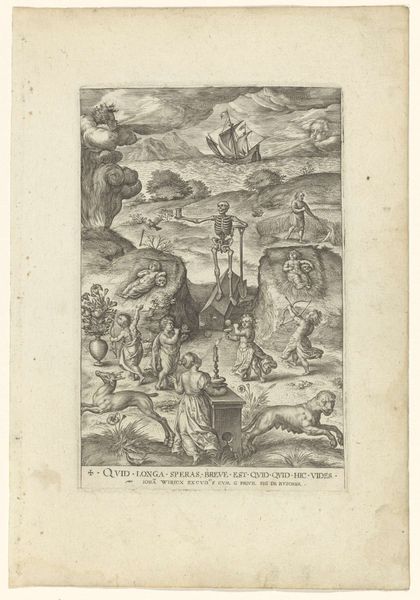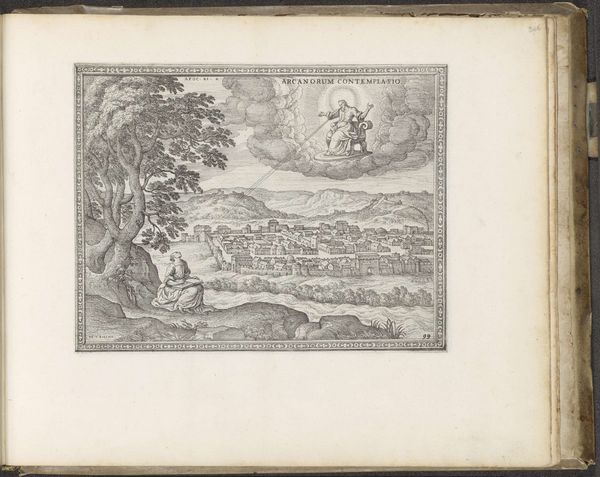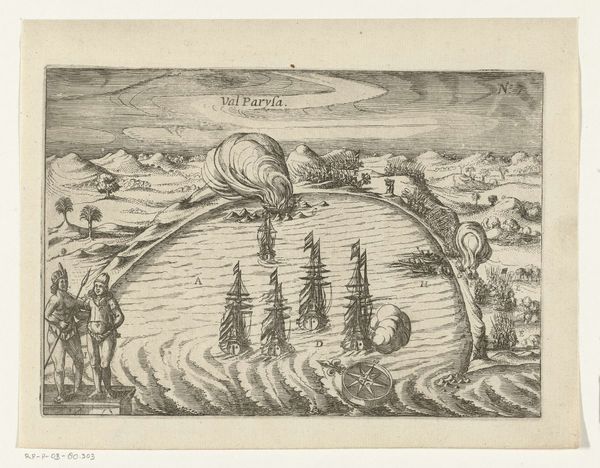
drawing, print, engraving
#
drawing
#
medieval
# print
#
landscape
#
line
#
engraving
Dimensions: height 84 mm, width 69 mm
Copyright: Rijks Museum: Open Domain
Albert Flamen created this etching of a moonlit landscape sometime in the mid-17th century. It depicts a placid harbor scene dominated by a somewhat unnerving face in the moon, which peers down from swirling clouds onto the town and surrounding hills. The banner above and the caption below, “Son eclat vient de son semblable,” or “Its brilliance comes from its like,” suggest a symbolic meaning. Flemish art of this period reflects a society enriched by trade, where the rising merchant class and the established aristocracy coexisted in a complex dance of power. Art became a commodity, but also a means of expressing civic pride and personal identity. Landscapes, in particular, allowed artists to capture both the beauty and the burgeoning economic activity of the Dutch Golden Age. Understanding this etching requires exploring the visual language of the time, as well as the social conditions that shaped its creation. Consider the influence of Dutch prosperity on artistic production, and the role of art institutions in fostering a sense of national identity. Historians consult period documents, inventories, and scholarly publications to reveal the social and cultural contexts that give artworks their meaning.
Comments
No comments
Be the first to comment and join the conversation on the ultimate creative platform.
